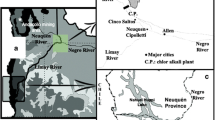Abstract
Biomonitoring provides direct evidence of the bioavailability and accumulation of toxic elements in the environment, and homing pigeons have been proposed as a biomonitor of atmospheric pollution. We evaluated metal concentrations in homing pigeon feather tissue as a biomonitoring tool. We measured cadmium, lead, and mercury concentrations in feathers collected from 5–6-yo homing pigeons from Guangzhou, Beijing, and Harbin, China during 2011, and feathers of 1, 5, and 10-yo homing pigeons collected from Guangzhou, Beijing, and Harbin, China during 2015–16. We compared metal concentrations in feathers between sexes and among ages and evaluated spatio-temporal differences. Correlations between feather metal concentrations and previously evaluated kidney and liver metal concentrations are reported. There were no significant differences in feather metal concentrations between male and female pigeons or among 1, 5, and 10-yo pigeons. Cadmium, lead, and mercury concentrations in feathers of 1-yo pigeons were significantly correlated with concentrations in liver and kidney tissues, although the correlations were not consistent. Spatio-temporal differences in feather metal concentrations suggest the usefulness of feathers in identifying areas of concern and remedial effectiveness. Homing pigeon feather metal concentrations appear to be useful as a screening biomonitoring tool.
Similar content being viewed by others
Data availability
All data included in this study are available upon request by contact with the corresponding author.
References
Abdullah M, Fasola M, Muhammad A, Malik SA, Bostan N, Bokhari H, Kamran MA, Shafqat MN, Alamdar A, Khan M, Ali N, Eqani SAMAS (2015) Avian feathers as a non-destructive bio-monitoring tool of trace metals signatures: a case study from severely contaminated areas. Chemosphere 119:553–561
AL-Alam J, Chbani A, Faljoun Z et al. (2019) The use of vegetation, bees, and snails as important tools for the biomonitoring of atmospheric pollution—a review. Environ Sci Pollut Res 26:9391–9408
AVMA (2013) AVMA Guidelines for the Euthanasia of Animals, 2013 Edition. American Veterinary Medical Association, Schaumburg
Beyer WN, Saplding M, Morrison D (1997) Mercury concentrations in feathers of wading birds from Florida. Ambio 26(2):97–100
Bortolotti GR (2010) Flaws and pitfalls in the chemical analysis of feathers: bad news-good news for avian chemoecology and toxicology. Ecol Appl 20:1766–1774
Burger J (1993) Metals in avian feathers: bioindicators of environmental pollution. Rev Environ Toxicol 5:203–311
Burger J, Gochfeld M (1995) Biomonitoring of heavy metals in the pacific basin using avian feathers. Environ Toxicol Chem 14:1233–1239
Burger J, Gochfeld M (1999) Heavy metals in Franklin’s gull tissues: age and tissue differences. Environ Toxicol Chem 18:673–678
Burger J, Gochfeld M, Sullivan K, Irons D (2008) Arsenic, cadmium, chromium, lead, manganese, mercury, and selenium in feathers of Black-legged Kittiwake (Rissa tridactyla) and Black Oystercatcher (Haematopus bachmani) from Prince William Sound, Alaska. Sci Total Environ 387:175–184
Cherel Y, Barbraud C, Lahournat M, Jaeger A, Wanless RM, Phillips RA, Thompson DR (2018) Accumulate or eliminate? Seasonal mercury dynamics in albatrosses, the most contaminated family of birds. Environ Pollut 241:124–135
Cizdziel JV, Dempsey S, Halbrook RS (2013) Preliminary evaluation of the use of homing pigeons as biomonitors of mercury in urban areas of the USA and China. Bull Environ Contam Toxicol 90:302–307
Clark RB (1992) Marine pollution. Clarendon Press, Oxford, p 61–79
Cui J, Halbrook RS, Zang S, Han S, Li X (2018) Metal concentrations in homing pigeon lung tissue as a biomonitor of atmospheric pollution. Ecotoxicology 27(2):169–174
Cui J, Halbrook RS, Zang S, You J (2016) Use of homing pigeons as biomonitors of atmospheric metal concentrations in Beijing and Guangzhou, China. Ecotoxicology 25:439–446
Cui J, Wu B, Halbrook RS, Zang S (2013) Age-dependent accumulation of heavy metals in liver, kidney and lung tissues of homing pigeons in Beijing, China. Ecotoxicology 22(10):1490–1497
Frantz A, Pottier M, Karimi B, Corbel H, Aubry E, Haussy C, Gasparini J, Castrec-Rouelle M (2012) Contrasting levels of heavy metals in the feathers of urban pigeons from close habitats suggest limited movements at a restricted scale. Environ Pollut 168:23–28
Furness RW (1993) Birds as monitors of pollutants. In: Furness RW, Greenwood JJD (Eds.) Birds as monitors of environmental change. Chapman & Hall, London, UK, p 86–143
Harrop DO, Mumby K, Ashworth J, Nolan J, Price M, Pepper B (1990) Air quality in the vicinity of urban roads. Sci Total Environ 93:285–292
He C, Su T, Liu S, Jiang A, Goodale E, Qiu G (2020) Heavy metal, arsenic, and selenium concentrations in bird feathers from a region in southern china impacted by intensive mining of nonferrous metals. Environ Toxicol Chem 39(2):371–380
Kim J, Koo TH (2007) The use of feathers to monitor heavy metal contamination in herons, Korea. Arch Environ Contam Toxicol 53:435–441
Liu WX, Ling X, Halbrook RS, Martineau D, Dou H, Liu X, Zhang G, Ta S (2010) Preliminary evaluation on the use of homing pigeons as a biomonitor in urban areas. Ecotoxicology 19:295–305
Llabjani V, Malik RN, Trevisan J, Hoti V, Ukpebor J, Shinwari ZK, Moeckel C, Jones KC, Shore RF, Martin FL (2012) Alterations in the infrared spectral signature of avian feathers reflect potential chemical exposure: a pilot study comparing two sites in Pakistan. Environ Int 48:39–46
Mailman RB (1980) Heavy metals. In: Perry JJ (ed) Introduction to environmental toxicology. Elsevier, New York, NY, p 34–43
Malik RN, Zeb N (2009) Assessment of environmental contamination using feathers of bubulcus ibis l. as a biomonitor of heavy metal pollution, Pakistan. Ecotoxicology 18(5):522–536
Merian E (1991) Metals and their compounds in the environment; occurrence, analysis and biological relevance. VCH, Weinheim
Mohammed AS, Kapri A, Goel R (2011) Heavy metal pollution: source, impact, and remedies. Environ Pollut 20:1–28
Peterson SH, Ackerman JT, Toney M, Herzog MP (2019) Mercury concentrations vary within and among individual bird feathers: a critical evaluation and guidelines for feather use in mercury monitoring programs. Environ Toxicol Chem 38(6):1164–1187
Schulwitz SE, Chumchal MM, Johnson JA (2015) Mercury concentrations in birds from two atmospherically contaminated sites in North Texas, USA. Arch Environ Contam Toxicol 69:390–398
Swaileh KM, Sansur R (2006) Monitoring urban heavy metal pollution using the House Sparrow (Passer domesticus). J Environ Monit 8:209–213
Thébault J, Bustamante P, Massaro M, Taylor G, Quillfeldt P (2020) Influence of species-specific feeding ecology on mercury concentrations in seabirds breeding on the Chatham Islands, New Zealand. Environ Toxicol Chem. https://doi.org/10.1002/etc.4933
Turner MC, Andersen ZJ, Baccarelli A, Diver WR, Gapstur SM, Pope CA, Prada D, Samet J, Thurston G, Cohen A (2020) Outdoor air pollution and cancer: an overview of the current evidence and public health recommendations. Cancer J Clin 70(6):460–47
USEPA (1994) Method 200.8: determination of trace elements in waters and wastes by inductively coupled plasma-mass spectrometry: revision 5.4. US Environmental Protection Agency, Office of Research and Development, Cincinnati, Ohio
USEPA (1996) Method 3050B: acid digestion of sediments, sludges, soils, and oils: revision 2. US Environmental Protection Agency, Washington DC
Acknowledgements
This research was financially supported by the National Key Research and Development Program of China (No. 2016YFC0500404-6), Youth Project of the National Natural Science Foundation of China (No. 41701574), the Natural Science Foundation of Heilongjiang Province, China (No. TD2019D002), the Doctoral Scientific Research Foundation of Harbin Normal University (No. XKB201404), and the University Nursing Program for Young Scholars with Creative Talents in Heilongjiang Province (UNPYSCT-2017187). We would like to thank the pigeon hobbyist for this assistance and for providing the pigeons used in our research.
Author contributions
SYZ, RSH, and JC developed research concepts and methods; JC conducted data analyses and wrote original draft; RSH supervised research and edited paper; JC and SH conducted chemical analyses; JC, RSH and MAM conducted necropsies and sample collections.
Funding
This research was financially supported by the National Key Research and Development Program of China (No. 2016YFC0500404-6), Youth Project of the National Natural Science Foundation of China (No. 41701574), the Natural Science Foundation of Heilongjiang Province, China (No. TD2019D002), the Doctoral Scientific Research Foundation of Harbin Normal University (No. XKB201404), and the University Nursing Program for Young Scholars with Creative Talents in Heilongjiang Province (UNPYSCT-2017187).
Author information
Authors and Affiliations
Corresponding author
Ethics declarations
Conflict of interest
The authors declare no competing interests.
Animal research
All applicable international, national, and/or institutional guidelines for the care and use of animals were followed.
Consent to participate
This article does not contain any studies with human participants performed by any of the authors.
Consent to publish
All of the authors gave final approval for publication.
Plant reproducibility
Plant reproducibility was not involved in this article.
Additional information
Publisher’s note Springer Nature remains neutral with regard to jurisdictional claims in published maps and institutional affiliations.
Rights and permissions
About this article
Cite this article
Cui, J., Halbrook, R.S., Zang, S. et al. Evaluation of homing pigeon feather tissue as a biomonitor of environmental metal concentrations in China. Ecotoxicology 30, 1521–1526 (2021). https://doi.org/10.1007/s10646-021-02387-5
Accepted:
Published:
Issue Date:
DOI: https://doi.org/10.1007/s10646-021-02387-5




